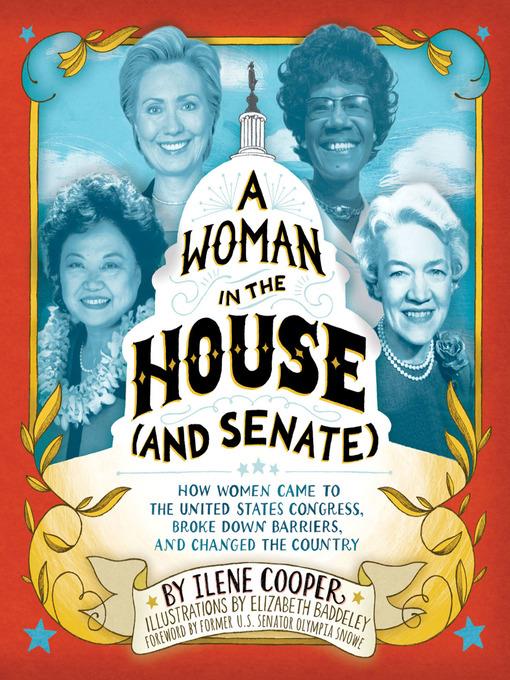
A Woman in the House (and Senate)
How Women Came to the United States Congress, Broke Down Barriers, and Changed the Country
فرمت کتاب
ebook
تاریخ انتشار
2014
Lexile Score
1040
Reading Level
6-8
ATOS
7.6
Interest Level
4-8(MG)
نویسنده
Ilene Cooperناشر
ABRAMSشابک
9781613126394
کتاب های مرتبط
- اطلاعات
- نقد و بررسی
- دیدگاه کاربران
نقد و بررسی

Starred review from January 15, 2014
It is no small task to create a book that summarizes over a century of U.S. history, gives a crash course in civics, and provides succinct, pithy biographies of numerous women who have served in the legislative and judicial branches of government. Cooper pulls it off. She sets her tone with the introduction: "Guess how many women served in the U.S. Senate and the House of Representatives from the first Congress in 1789 until the 65th Congress began in 1917. / 200? 100? 50? / Zero. Nada. None.... / What's up with that?" Vigorous prose and well-chosen anecdotes, enhanced by elegant design, make for a continually engaging read. A double-page spread featuring a 1914 photograph of suffragists superimposed with a feisty Susan B. Anthony quotation precedes some general history of the suffrage movement, followed by short biographies of key women. Each subsequent chronological section similarly captures an era, with appropriate artwork. (Doves and flowers adorn the introduction to the 1960s). Throughout the cataloging of legislative triumphs--in a spectrum of issues far beyond women's rights--there are documented anecdotes of struggles against racism and sexism, such as the day in the 1970s when a committee chairman insisted that the sole female representative and the sole African-American representative share a chair, as their votes "were worth only half of one regular Member." Accessible, erudite, aesthetically appealing: a must-have. (foreword, appendix, endnotes, bibliography, acknowledgments, index) (Nonfiction. 10-14)
COPYRIGHT(2014) Kirkus Reviews, ALL RIGHTS RESERVED.

March 1, 2014
Gr 6-10-This volume begins with a profile of the first woman to serve in Congress, Representative Jeannette Rankin, elected in 1916. Cooper includes some background about the struggle for women's suffrage but focuses on the 20th century and organizes the book by era, comparing women's progress in Congress with their overall status in the country. She describes their gradual advancement from filling seats of dead husbands or fathers to running, winning, and leading on their own. The final chapters on the contemporary period concentrate on women who broke new barriers, such as Shirley Chisholm and Nancy Pelosi, or became nationally prominent, such as Geraldine Ferraro. Cooper celebrates the gains women have made, but explains that parity remains a distant goal. Her informal writing style includes interesting details and anecdotes about the women's struggles and triumphs. However, the book contains several errors, the most important being the author's repeated claims that vacancies in the House can be filled by appointment, when constitutionally, all House seats must be filled by election. (Senate vacancies can be filled by appointment.) The text is supplemented by photos and cartoon-style illustrations, an appendix on how the federal government operates, and a list of women who have served in Congress. Although there are many individual biographies of Congressional women, few describe the progress of women as a group, and most of those, such as Jill S. Pollack's Women on the Hill (Watts, 1996), are dated. The error regarding appointment to House seats is an unfortunate oversight; some libraries may wish to pass on this title or wait for a corrected edition. If librarians and educators can look beyond this flaw, the engaging biographical sketches and lively overview of women in American politics presented in this work may prove worthy of inclusion in some collections.-Mary Mueller, Rolla Public Schools, MO
Copyright 2014 School Library Journal, LLC Used with permission.

























دیدگاه کاربران